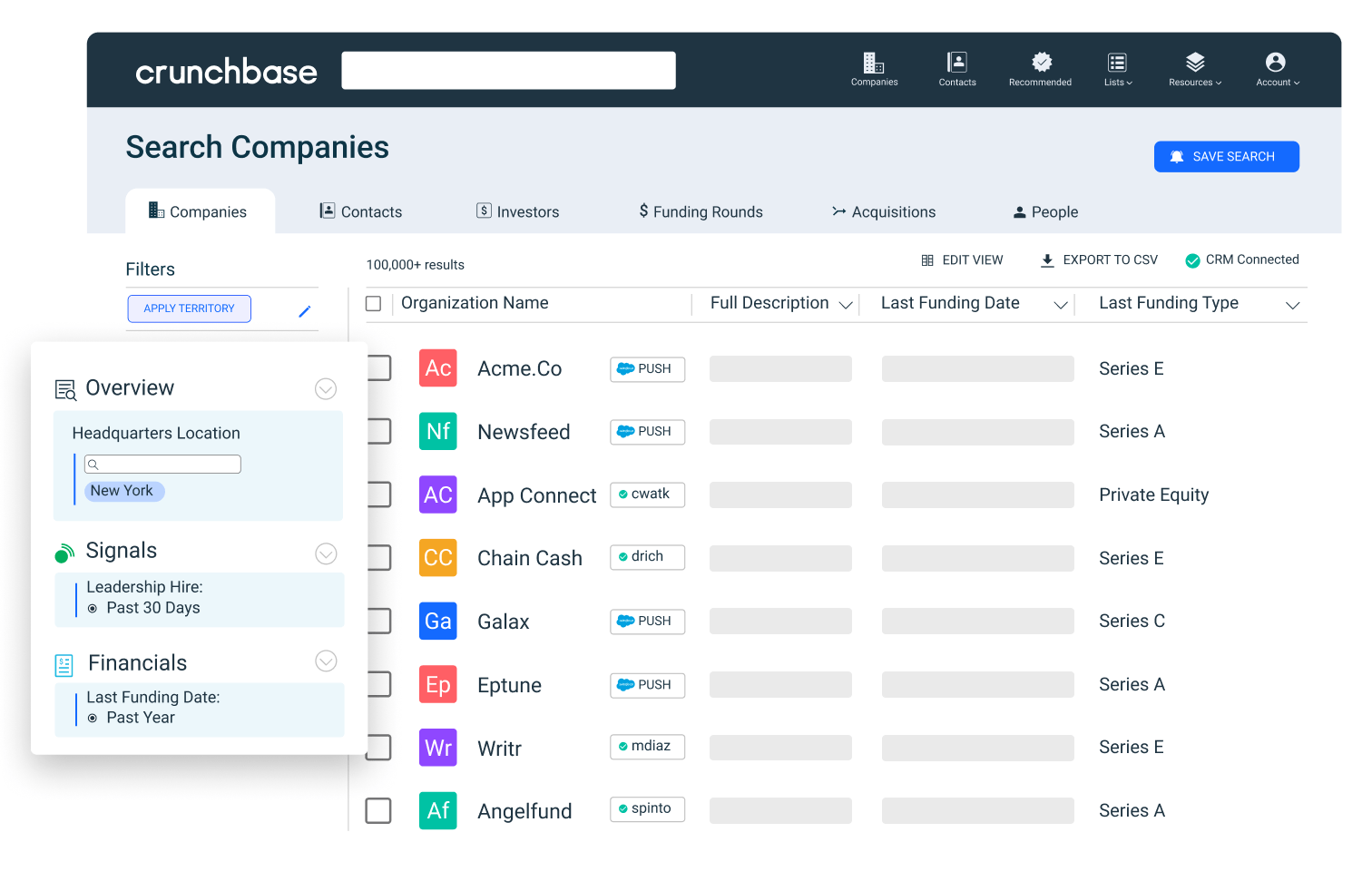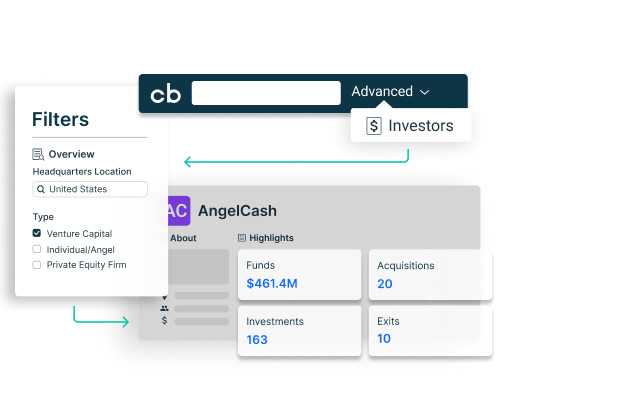Crunchbase helps you discover innovative companies and connect with the people behind them. For salespeople, that means finding the most promising sales prospects and identifying the perfect time to reach out. In addition to advanced search filters and the recommended companies feature, which are designed to help you identify prospects, Crunchbase’s rank and trend scores can help you qualify and prioritize the right prospects. These proprietary scores were designed to surface the companies you need to know and help you reach out at the right time.
Search less. Close more.
Grow your revenue with all-in-one prospecting solutions powered by the leader in private-company data.
In this article, you’ll find answers to all of your questions about Crunchbase’s rank and trend scores, along with how to put them to work for you. Let’s get started.
- What is Crunchbase rank?
- What is Crunchbase trend score?
- How to use Crunchbase rank and trend scores in searches
What is Crunchbase rank?
Crunchbase rank is a dynamic ranking for all entities–company, people, investors, etc.–in the Crunchbase dataset. A company’s ranking is found using Crunchbase’s intelligent algorithms to score and rank entities so you can quickly see what matters most in real-time. In other words, it measures the prominence of an entity.
The Crunchbase rank algorithm takes many signals into account, including the number of connections a profile has, the level of community engagement, funding events, news articles and acquisitions. An entity’s Crunchbase rank is fluid and subject to rise and fall over time. Time-sensitive events such as product launches, funding events, leadership changes and news affect a company’s Crunchbase rank.


What is Crunchbase trend score?
While Crunchbase rank shows context, the Crunchbase trend score demonstrates activity. As a company’s rank changes, so does its trend score. A company’s rank will change based on activity—fundraising, news, etc.—while a company’s trend score is an indicator of how much its rank is changing at any given time.
The Crunchbase trend score measures the rate of a company’s activity on a 20-point scale. Scores closer to +10 mean it’s moving up in rank much faster when compared to its peers. Scores closer to -10 mean it’s moving down. For example, a company that announces its first funding round will likely experience a jump in its rank, pushing its trend score up as its page views, article counts, funding amount and team members begin to increase.
Connect with the right decision-makers
Get alerted when companies hire new decision-makers with Crunchbase.


How to use Crunchbase rank and trend scores in searches
Now that we’ve defined what rank and trend scores are, let’s look at a few examples of how to put them to use.
#1: Streamline your sales prospecting workflow
Imagine a sales team’s ideal customer profile (ICP) includes established cybersecurity companies in New York. Their Crunchbase search may look something like this:
- Industry: Cybersecurity
- Headquarters Location: U.S.
- Total Funding Amount: Greater than $50M
- Founded Date: Before 2012


Based on this search criteria, the list generated 111 companies. To prioritize their outreach plan, sales reps can look at the Crunchbase rank to see companies worth researching listed in ascending order.
The sales team believes their product/solution can benefit both the companies at the top and middle of this list the most. Why? Because their logic is this: The more known and recognized a company—the higher rank—the more likely it is to have bigger budgets and teams and therefore more likely to afford the sales team’s product or solution. They also include companies in the middle of the list as these companies might be easier to access.
They click the statistics and identify the Crunchbase rank median to be 6,457.
They then add an additional search filter to show only the companies with a rank of less than 6,457, resulting in a more manageable list of 50 companies. The sales team can now save this list, qualify and prioritize prospects based on additional firmographic company information and buy signals in Crunchbase, and begin their outreach to the right decision-makers, directly from Crunchbase.
#2: Find the right investors
An entrepreneur is looking for a venture capital firm on the East Coast to invest in her advertising software company. She wants a well-established and well-respected firm that makes a higher number of investments. Here’s her search:
- Location: New York or Washington DC
- Portfolio Companies: Software and Advertising
- Number of Investments: Greater than 100
- Crunchbase Rank: Less than 1,000


She added the Crunchbase rank filter (of less than 1,000) to narrow her search to the top 1 percent of venture capitalists in her market segment. The search rank filter narrowed down her list to 12 top-ranked VCs for her particular startup. She can now use this list to set up personalized alerts and keep track of the VC’s latest investments and how they’re performing.
From these examples, you’ve seen how Crunchbase’s rank and trend scores can be used to quickly identify prominent—or less prominent—players and take advantage of market trends.
Find better prospects with Crunchbase
With Crunchbase rank and trend scores, you can easily generate and prioritize Crunchbase search results based on context and activity to take your prospecting to the next level. For more sales prospecting tips and information about how to leverage Crunchbase as your all-in-one prospecting solution, check out the resources below:
- 4 Ways To Find and Engage Hyper-Targeted Sales Leads with Crunchbase
- Sales Prospecting: The Ultimate Guide to Success
- 5 Ways Crunchbase Makes Prospecting More Efficient




